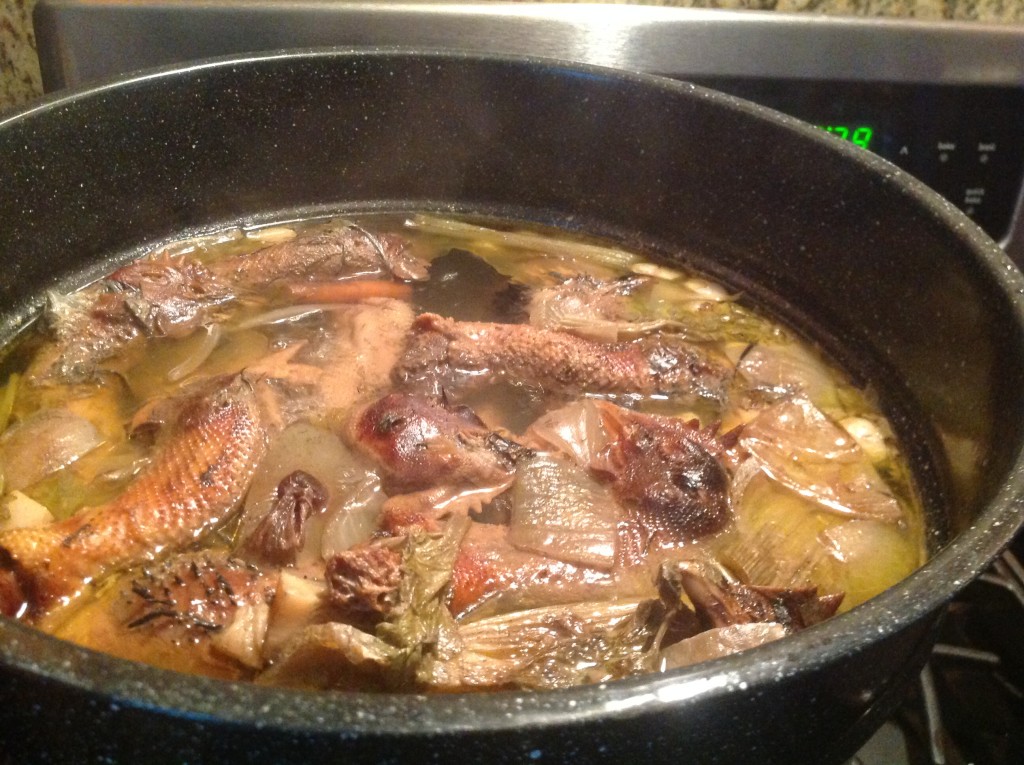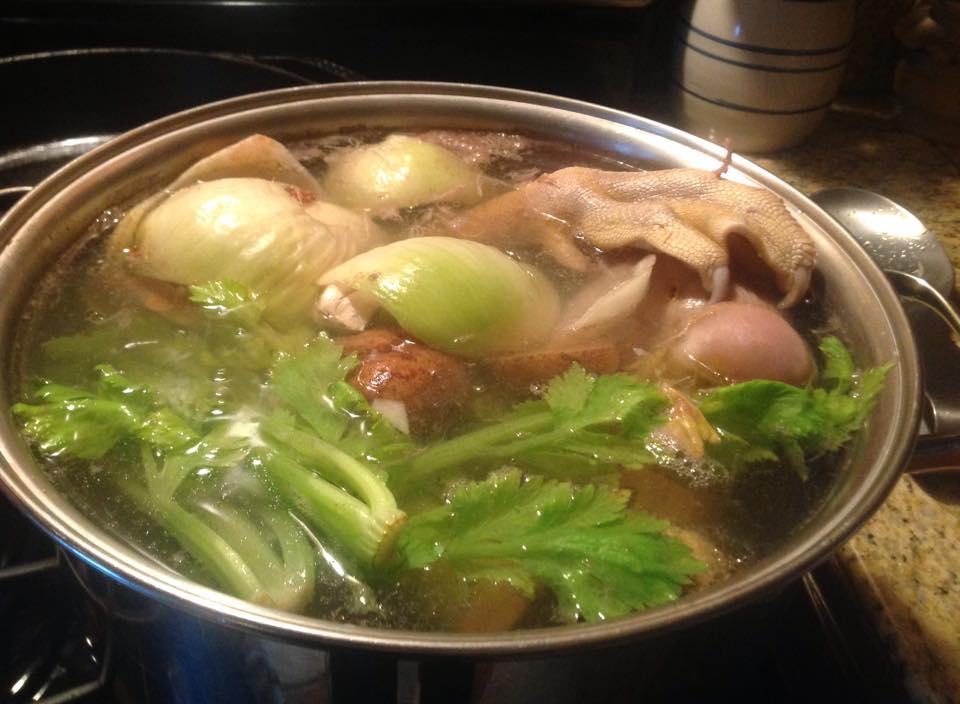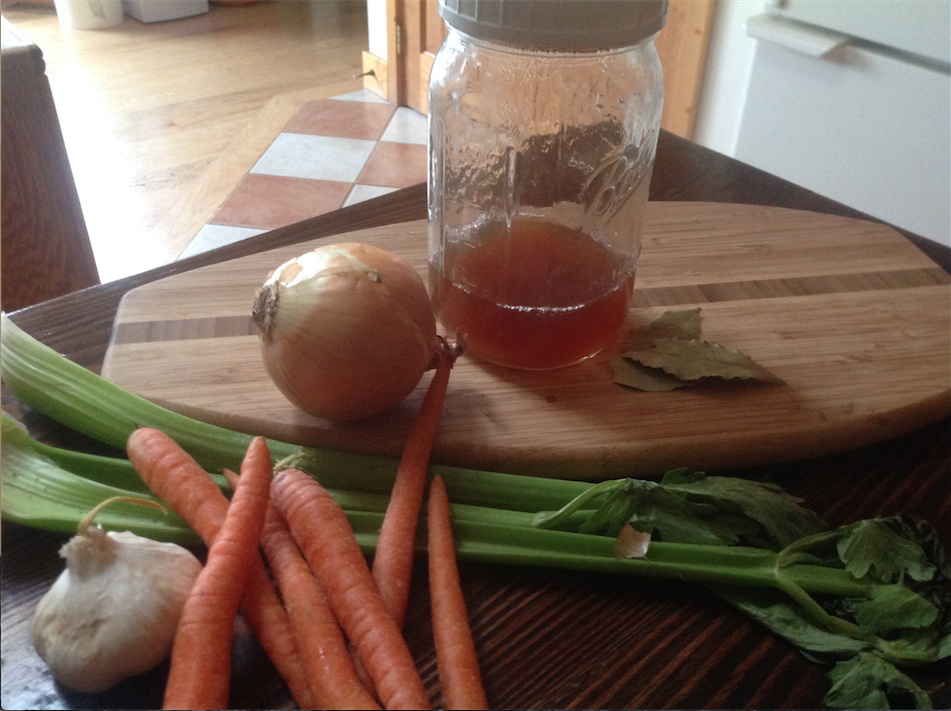Improve You Health Drinking Bone Broth
There is much controversy over the health benefits of bone broth, you can find articles all over the web that fall into one of two camps: bone broth is another unscientifically supported health fad or bone broth is a health booster. I fall into the second camp.
When it comes to scientific evidence, it is true that there are no studies that have been conducted on bone broth, however, there are dozens of studies one can find that have explored the health benefits of the ingredients found in bone broth. “We have science that supports the use of cartilage, gelatin, and other components found in homemade bone broth to prevent and sometimes even reverse osteoarthritis, osteoporosis, digestive distress, autoimmune disorders, and even cancer,” says Kaayla T. Daniel, PhD, a nutrition scientist, certified clinical nutritionist, and co-author of Nourishing Broths.
Other Benefits from Bone Broth
This type of broth is a fairly new phenomenon in the west, but it certainly isn’t a new thing. Asian countries have benefited from the positive results of drinking bone broth for generations – improved energy & health, look younger (due to the presence of collagen), better sleep and memory, among others. At The Prepared Homestead when we hold our all-day workshop, “Introduction to Homesteading”, we serve a farm-fresh lunch, the first course is always a cup of bone broth to begin the digestion process and increase absorption of nutrients from the food we’re serving.
Homemade bone broth is not complicated or mysterious
It’s pretty much foolproof. Follow basic principles: simmer 24 hours, add apple cider vinegar to help break down the bones, use organic ingredients and you’ll be on your way! Once you start making your own you will see how easy and inexpensive it truly is.
In winter I usually keep a pot of bone broth simmering because we use it extensively and it helps heat our kitchen. However, by this time of year I begin to make double or triple what we will use each week and “can it” for use in the summer. You can freeze it in baggies if you have space in your freezer and you don’t plan on keeping it for months. Any broth I plan on using within a week I store in jars in the refrigerator, it keeps just fine.
Basic Bone Broth Recipe
It’s very important to make sure you are using organic vegetables and bones from healthy chickens (or ducks, etc). If you are raising and butchering your own poultry this won’t be a problem, but if you are buying from a store or other farmer check to be sure it is organic. So here is the basic recipe to make your own bone broth. I usually make about 5 gallons at a time.
Ingredients:
- Chicken heads, necks, & feet or whole carcass(approximately 4 pounds per gallon of water).
I do wash the feet in hot water and vinegar and try to take off the outer skin if it is still intact. Many times it has come off during the butchering process. I also rinse the heads and pull off excess feathers, I do not worry about getting every last feather off, you can be as picky as you want here. I usually freeze these until I’m ready to use them and just drop them in the pot frozen. Every time we roast one of our chickens we either freeze it for later, or put it straight in a pot and make some broth – no wasting here!
- 1 bay leaf per gallon
The next four ingredients will add good flavor and vitamins to your broth. Oftentimes I use the scraps from cooking throughout the week – the ends of the onions, carrots, celery. Don’t think you need to use whole. I do when I don’t have scraps to use. Also, I don’t always put in one whole onion per gallon. There’s a lot of flexibility here, so don’t stress over the details.
- 1 onion, coarsely chopped
- 2 carrots, chopped
- 2 celery stalks, chopped
- 2-3 cloves garlic
- 1-1/2 gallons filtered water
- 2 tablespoons apple cider vinegar per gallon
- Optional: ginger, herbs, salt, pepper, soy sauce, more garlic, Tamari soy sauce
Once it’s done cooking, the bones are broken down and soft, these are safe to give your dogs as a treat (ours love it!) That’s it!
Bone broth fits perfectly into any diet including gluten-free and/or paleo, just simply drink the broth like tea. Another option is to add it to any recipe that uses water – grains cook up beautifully in bone broth!

Bone broth about 12 hours into simmering. The bones will begin to looks softer and vegetables will start looking soggy and tasteless. A few more ideasthere are a ton more ways to use bone broth, you are only limited by your imagination!
A few more ideas
- Soups – use as your base instead of water or other broths
- Beans –After soaking, cook beans in broth or use it as the liquid when canning beans
- Noodles/dumplings – Cook noodles or dumplings in broth and add any meat, eggs, veggies, or herbs you would enjoy.
- Zupa Toscano – Sauté 1-pound sausage and 1 chopped onion, add to a large pot with 1 gallon broth, peel and cube 5 potatoes and add them to the pot, simmer until potatoes are cooked through. Add chopped kale, simmer 5 more minutes then add ¼ cup cream, stir and serve. Or make it paleo and use zucchini and cubed squash in place of the potatoes.
Ingredients
- 4 pounds chicken bones (approximately 3 pounds per gallon of water)
- 1 bay leaf per gallon
- 1 onion, coarsely chopped
- 2-4 carrots, chopped
- 2 celery stalks, chopped
- 2-3 cloves garlic
- 1 Tbsp whole black peppers
- 1-1/2 gallons filtered water
- 2 tablespoons apple cider vinegar per gallon
- Optional: ginger, herbs, salt, pepper, soy sauce, more garlic, Tamari soy sauce
Instructions
- Place all main ingredients (not the optional) in a large stockpot or slow cooker
- Cover
- Stock Pot: Bring to a boil then reduce heat and simmer for 24-72 hours
- Slow Cooker: Put on high for the first 2 hours, then on low for the remaining 24-72
- Skim the foam off the top after about 2 hours
- During the last 30 minutes, add any optional ingredients you want and season to taste
- Strain it through a strainer lined with cheeseclothor large nut milk bag
- Pour into single-serve jars or regular canning jars
- label them and make sure to put the date
- Store in refrigerator and use within a week or freeze for use later either in a jar (make sure there is about 2" headspace) or in a large ice cube tray and place in a Ziploc Freezer bags.






Leave a Reply
You must be logged in to post a comment.